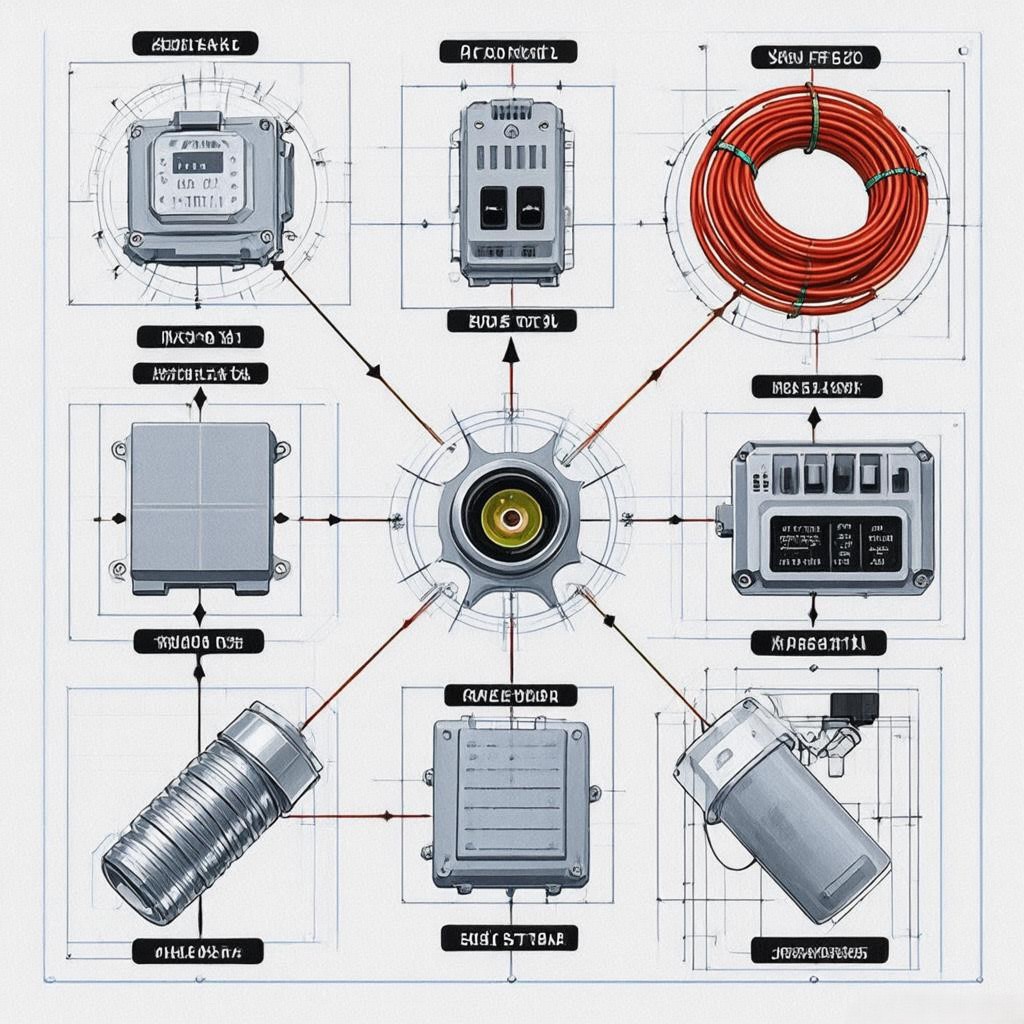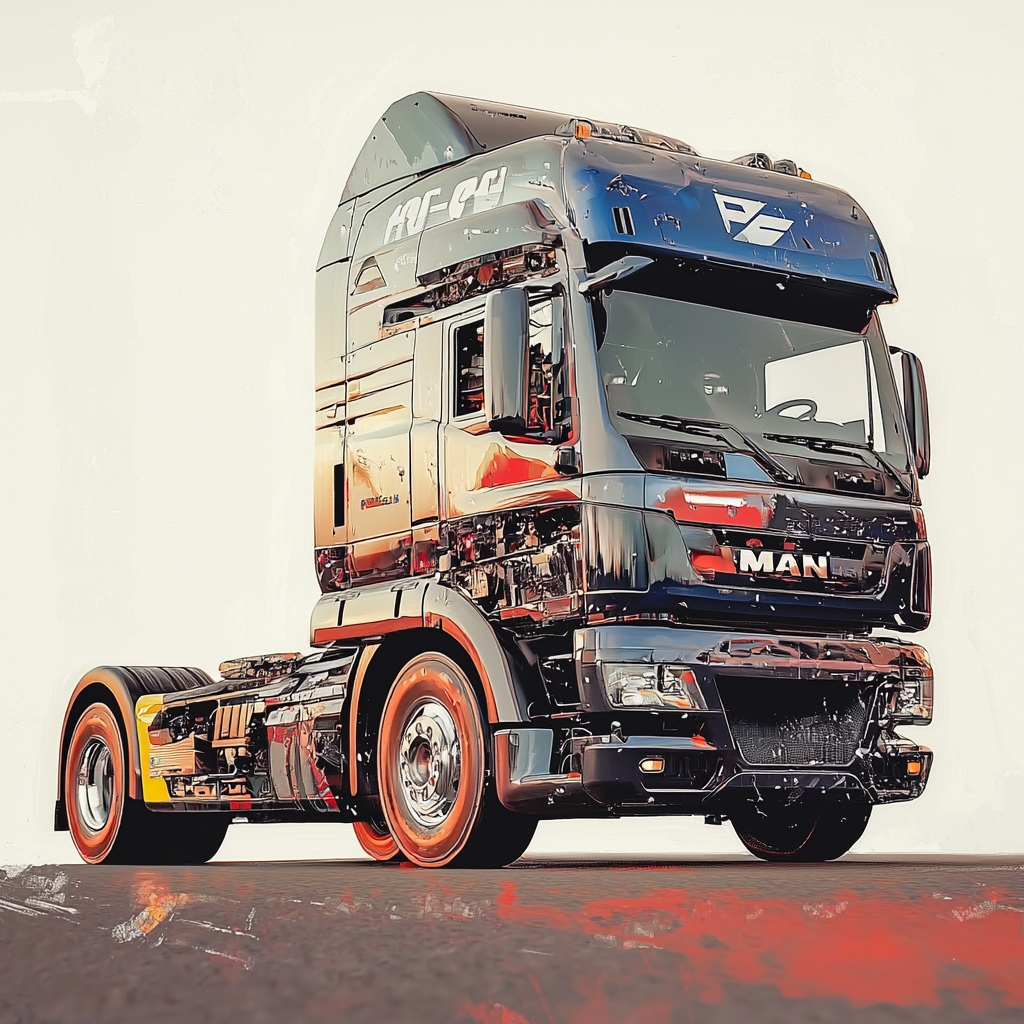Introduction
For heavy-duty trucks navigating steep mountain roads or prolonged descents, traditional friction brakes alone are insufficient to manage kinetic energy safely. This is where retarders (often abbreviated as REV) become critical. Acting as secondary braking systems, retarders convert excess kinetic energy into heat or other forms of energy, reducing reliance on wheel brakes and preventing catastrophic failures like brake fade or rotor warping. This blog explores the mechanics of modern retarder systems, their thermal management challenges, and actionable strategies to maximize longevity and safety.
Retarder (REV) Systems in Heavy-Duty Trucks: A Technical Deep Dive and Maintenance Guide for Enhanced Safety on Long Descents
Introduction
For heavy-duty trucks navigating steep mountain roads or prolonged descents, traditional friction brakes alone are insufficient to manage kinetic energy safely. This is where retarders (often abbreviated as REV) become critical. Acting as secondary braking systems, retarders convert excess kinetic energy into heat or other forms of energy, reducing reliance on wheel brakes and preventing catastrophic failures like brake fade or rotor warping. This blog explores the mechanics of modern retarder systems, their thermal management challenges, and actionable strategies to maximize longevity and safety.
How Retarders Work: The Science Behind Controlled Deceleration
Retarders operate on three primary principles, each suited to specific applications:
1. Hydraulic Retarders
- Mechanism: Use pressurized oil to create resistance between rotating and stationary vanes.
- Energy Conversion: Kinetic energy → Heat (dissipated via engine coolant or dedicated radiators).
- Example: Telma retarders, common in European trucks like Volvo FH16.
2. Electromagnetic Retarders (Eddy Current)
- Mechanism: Generate opposing magnetic fields to slow the driveline.
- Energy Conversion: Kinetic energy → Electrical energy → Heat (radiated via air cooling).
- Example: Frenelsa Intarder, popular in Scania R/S Series.
3. Exhaust Retarders
- Mechanism: Restrict exhaust flow, creating backpressure to slow the engine.
- Energy Conversion: Kinetic energy → Heat (expelled through the exhaust system).
- Example: Jacobs Engine Brake, widely used in North American Kenworth T680.
Key Components of a Retarder System
1. Rotor & Stator Assembly
- Function: Creates friction (hydraulic) or magnetic resistance (eddy current).
- Materials: High-carbon steel rotors with vanadium coatings for thermal stability.
2. Hydraulic Control Module
- Role: Regulates oil pressure and flow rates (3–12 bar typical).
- Critical Parts: Proportional valves, pressure sensors, and accumulators.
3. Thermal Management System
- Cooling Circuits:
- Primary: Engine coolant loop (for hydraulic retarders).
- Secondary: Dedicated radiators with thermostatic fans (e.g., Voith Retarder Cooler).
- Temperature Sensors: Monitor rotor (up to 300°C) and oil (120–150°C) temperatures.
4. Control Interface
- Driver Inputs: Steering wheel paddles or dash-mounted controls (3–5 braking stages).
- Integration: Synchronizes with ABS/EBS and adaptive cruise control systems.
Thermal Management: Preventing Overheating and Failure
Retarders generate immense heat during prolonged use. Poor thermal management leads to:
- Oil Degradation: Reduced viscosity and lubricity, accelerating wear.
- Rotor Warping: Thermal expansion causes imbalance and vibration.
- Seal Failure: Overheated oil degrades elastomer seals, causing leaks.
Best Practices for Heat Dissipation:
- Pre-Descend Preparation
- Engage the retarder before descending to avoid sudden heat spikes.
- Maintain engine RPM above 1,500 for optimal coolant flow.
- Staged Braking
- Use 50–70% retarder capacity, reserving 30% for emergency friction brakes.
- Auxiliary Cooling Upgrades
- Install high-capacity radiators (e.g., Modine Heavy-Duty Coolers).
- Retrofit thermostatically controlled fans for on-demand airflow.
- Oil Maintenance
- Use synthetic retarder oil (ISO VG 46) with a 600-hour change interval.
- Test oil for oxidation and viscosity loss every 300 hours.
Common Retarder Failures and Prevention Strategies
1. Oil Contamination
- Symptoms: Erratic braking force, warning lights (e.g., Voith DIWA diagnostic codes).
- Prevention:
- Replace oil filters every 1,200 hours.
- Use breathers with desiccant filters to block moisture ingress.
2. Rotor Scoring/Glazing
- Causes: Overheating, abrasive particles in oil.
- Solution:
- Resurface rotors to a surface roughness (Ra) of 0.8–1.6 µm.
- Install magnetic oil filters to capture ferrous debris.
3. Electrical Faults in Eddy Current Systems
- Triggers: Corroded connectors, failing voltage regulators.
- Fix:
- Clean electrical contacts with CRC 2-26 every 6 months.
- Test stator coil resistance (0.2–0.5 Ω) during annual inspections.
4. Exhaust Valve Sticking (Exhaust Retarders)
- Root Cause: Carbon buildup from prolonged backpressure.
- Prevention:
- Perform decoke treatments every 100,000 km.
- Use fuel additives (e.g., Liqui Moly Diesel Purge) to reduce soot.
Case Study: Optimizing Retarder Performance in Alpine Haulage
A Swiss fleet operating Mercedes-Benz Actros 1840 trucks on Gotthard Pass routes reported recurrent retarder failures. After implementing:
- Upgraded Coolers: Modine radiators increased heat dissipation by 40%.
- Driver Training: Staged braking reduced peak oil temps from 160°C to 135°C.
- Predictive Maintenance: Oil analysis cut unplanned downtime by 60%.
Result: Retarder lifespan extended from 500,000 km to 800,000 km.
Future Trends: Smarter Retarder Systems
- Integrated Thermal Management
- AI algorithms predict heat buildup and adjust cooling preemptively.
- Hybrid Retarder-EBS Systems
- ZF’s OptiRetard blends EBS pressure modulation with retarder torque.
- Electric Retarders for EVs
- Regenerative braking repurposes energy for battery charging (e.g., Tesla Semi prototype).
Maintenance Checklist for Fleet Managers
- Daily: Inspect for oil leaks and abnormal noises.
- Monthly: Clean cooling fins and test electrical connections.
- Biannually: Flush oil circuits and recalibrate control software.
- Annually: Conduct dynamometer tests to measure braking torque (kN·m).
Conclusion
Retarders are indispensable for safe heavy-duty operations, but their effectiveness hinges on meticulous thermal management and proactive maintenance. By understanding their components, respecting thermal limits, and adopting predictive maintenance, fleets can slash downtime costs and keep drivers safe on the world’s most demanding roads.
This guide equips technicians and operators with the knowledge to harness retarder technology effectively—turning steep descents from a liability into a controlled, safe maneuver. 🚛⛰️




